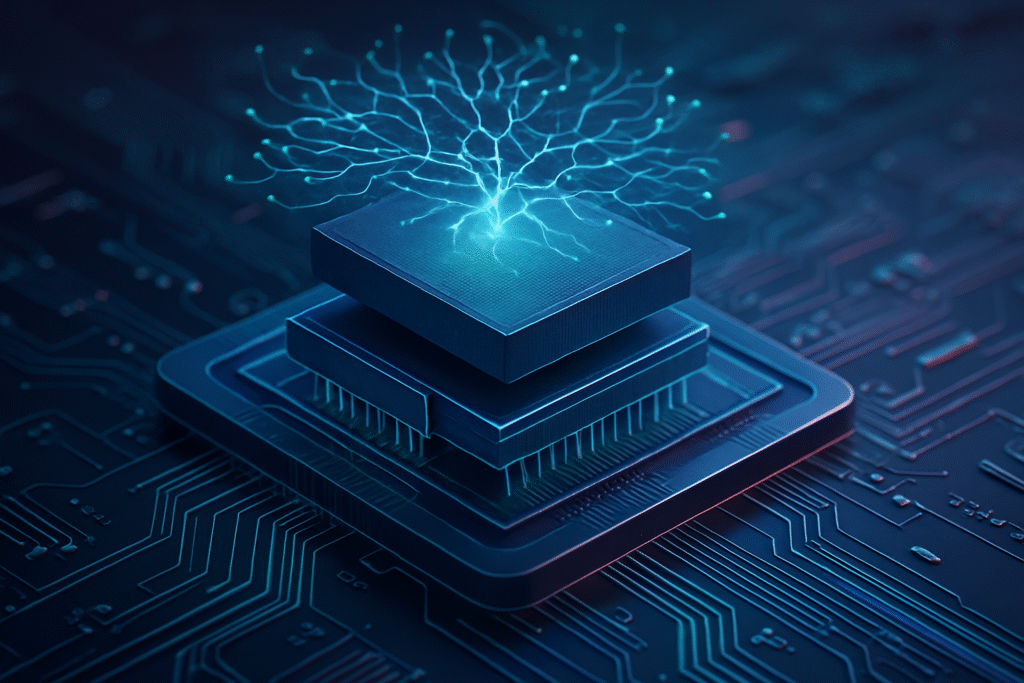
The relentless march of Artificial Intelligence demands ever-increasing computational power, blazing-fast data transfer, and unparalleled energy efficiency. As traditional silicon scaling, famously known as Moore's Law, approaches its physical and economic limits, the semiconductor industry is turning to a new frontier of innovation: advanced packaging technologies. These groundbreaking techniques are no longer just a back-end process; they are now at the forefront of hardware design, proving crucial for enhancing the performance and efficiency of chips that power the most sophisticated AI and machine learning applications, from large language models to autonomous systems.
This shift represents an immediate and critical evolution in microelectronics. Without these innovations, the escalating demands of modern AI workloads—which are inherently data-intensive and latency-sensitive—would quickly outstrip the capabilities of conventional chip designs. Advanced packaging solutions are enabling the close integration of processing units and memory, dramatically boosting bandwidth, reducing latency, and overcoming the persistent "memory wall" bottleneck that has historically constrained AI performance. By allowing for higher computational density and more efficient power delivery, these technologies are directly fueling the ongoing AI revolution, making more powerful, energy-efficient, and compact AI hardware a reality.
Technical Marvels: The Core of AI's Hardware Revolution
The advancements in chip packaging are fundamentally redefining what's possible in AI hardware. These technologies move beyond the limitations of monolithic 2D designs to achieve unprecedented levels of performance, efficiency, and flexibility.
2.5D Packaging represents an ingenious intermediate step, where multiple bare dies—such as a Graphics Processing Unit (GPU) and High-Bandwidth Memory (HBM) stacks—are placed side-by-side on a shared silicon or organic interposer. This interposer is a sophisticated substrate etched with fine wiring patterns (Redistribution Layers, or RDLs) and often incorporates Through-Silicon Vias (TSVs) to route signals and power between the dies. Companies like Taiwan Semiconductor Manufacturing Company (TSMC) (NYSE: TSM) with its CoWoS (Chip-on-Wafer-on-Substrate) and Intel (NASDAQ: INTC) with its EMIB (Embedded Multi-die Interconnect Bridge) are pioneers here. This approach drastically shortens signal paths between logic and memory, providing a massive, ultra-wide communication bus critical for data-intensive AI. This directly addresses the "memory wall" problem and significantly improves power efficiency by reducing electrical resistance.
3D Stacking takes integration a step further, vertically integrating multiple active dies or wafers directly on top of each other. This is achieved through TSVs, which are vertical electrical connections passing through the silicon die, allowing signals to travel directly between stacked layers. The extreme proximity of components via TSVs drastically reduces interconnect lengths, leading to superior system design with improved thermal, electrical, and structural advantages. This translates to maximized integration density, ultra-fast data transfer, and significantly higher bandwidth, all crucial for AI applications that require rapid access to massive datasets.
Chiplets are small, specialized integrated circuits, each performing a specific function (e.g., CPU, GPU, NPU, specialized memory, I/O). Instead of a single, large monolithic chip, manufacturers assemble these smaller, optimized chiplets into a single multi-chiplet module (MCM) or System-in-Package (SiP) using 2.5D or 3D packaging. High-speed interconnects like Universal Chiplet Interconnect Express (UCIe) enable ultra-fast data exchange. This modular approach allows for unparalleled scalability, flexibility, and optimized performance/power efficiency, as each chiplet can be fabricated with the most suitable process technology. It also improves manufacturing yield and lowers costs by allowing individual components to be tested before integration.
Hybrid Bonding is a cutting-edge technique that enables direct copper-to-copper and oxide-to-oxide connections between wafers or dies, eliminating traditional solder bumps. This achieves ultra-high interconnect density with pitches below 10 µm, even down to sub-micron levels. This bumpless connection results in vastly expanded I/O and heightened bandwidth (exceeding 1000 GB/s), superior electrical performance, and a reduced form factor. Hybrid bonding is a key enabler for advanced 3D stacking of logic and memory, facilitating unprecedented integration for technologies like TSMC’s SoIC and Intel’s Foveros Direct.
The AI research community and industry experts have universally hailed these advancements as "critical," "essential," and "transformative." They emphasize that these packaging innovations directly tackle the "memory wall," enable next-generation AI by extending performance scaling beyond transistor miniaturization, and are fundamentally reshaping the industry landscape. While acknowledging challenges like increased design complexity and thermal management, the consensus is that these technologies are indispensable for the future of AI.
Reshaping the AI Battleground: Impact on Tech Giants and Startups
Advanced packaging technologies are not just technical marvels; they are strategic assets that are profoundly reshaping the competitive landscape across the AI industry. The ability to effectively integrate and package chips is becoming as vital as the chip design itself, creating new winners and posing significant challenges for those unable to adapt.
Leading semiconductor players are heavily invested and stand to benefit immensely. TSMC (NYSE: TSM), as the world’s largest contract chipmaker, is a primary beneficiary, investing billions in its CoWoS and SoIC advanced packaging solutions to meet "very strong" demand from HPC and AI clients. Intel (NASDAQ: INTC), through its IDM 2.0 strategy, is pushing its Foveros (3D stacking) and EMIB (2.5D) technologies, offering these services to external customers via Intel Foundry Services. Samsung (KRX: 005930) is aggressively expanding its foundry business, aiming to be a "one-stop shop" for AI chip development, leveraging its SAINT (Samsung Advanced Interconnection Technology) 3D packaging and expertise across memory and advanced logic. AMD (NASDAQ: AMD) extensively uses chiplets in its Ryzen and EPYC processors, and its Instinct MI300A/X series accelerators integrate GPU, CPU, and memory chiplets using 2.5D and 3D packaging for energy-efficient AI. NVIDIA (NASDAQ: NVDA)'s H100 and A100 GPUs, and its newer Blackwell chips, are prime examples leveraging 2.5D CoWoS technology for unparalleled AI performance, demonstrating the critical role of packaging in its market dominance.
Beyond the chipmakers, tech giants and hyperscalers like Google (NASDAQ: GOOGL), Meta (NASDAQ: META), Amazon (NASDAQ: AMZN), and Tesla (NASDAQ: TSLA) are either developing custom AI chips (e.g., Google's TPUs, Amazon's Trainium and Inferentia) or heavily utilizing third-party accelerators. They directly benefit from the performance and efficiency gains, which are essential for powering their massive data centers and AI services. Amazon, for instance, is increasingly pursuing vertical integration in chip design and manufacturing to gain greater control and optimize for its specific AI workloads, reducing reliance on external suppliers.
The competitive implications are significant. The battleground is shifting from solely designing the best transistor to effectively integrating and packaging it, making packaging prowess a critical differentiator. Companies with strong foundry ties and early access to advanced packaging capacity gain substantial strategic advantages. This also leads to potential disruption: older technologies relying solely on traditional 2D scaling will struggle to compete, potentially rendering some existing products less competitive. Faster innovation cycles driven by modularity will accelerate hardware turnover. Furthermore, advanced packaging enables entirely new categories of AI products requiring extreme computational density, such as advanced autonomous systems and specialized medical devices. For startups, chiplet technology could lower barriers to entry, allowing them to innovate faster in specialized AI hardware by leveraging pre-designed components rather than designing entire monolithic chips from scratch.
A New Foundation for AI's Future: Wider Significance
Advanced packaging is not merely a technical upgrade; it's a foundational shift that underpins the broader AI landscape and its future trends. Its significance extends far beyond individual chip performance, impacting everything from the economic viability of AI deployments to the very types of AI models we can develop.
At its core, advanced packaging is about extending the trajectory of AI progress beyond the physical limitations of traditional silicon manufacturing. It provides an alternative pathway to continue performance scaling, ensuring that hardware infrastructure can keep pace with the escalating computational demands of complex AI models. This is particularly crucial for the development and deployment of ever-larger large language models and increasingly sophisticated generative AI applications. By enabling heterogeneous integration and specialized chiplets, it fosters a new era of purpose-built AI hardware, where processors are precisely optimized for specific tasks, leading to unprecedented efficiency and performance gains. This contrasts sharply with the general-purpose computing paradigm that often characterized earlier AI development.
The impact on AI's capabilities is profound. The ability to dramatically increase memory bandwidth and reduce latency, facilitated by 2.5D and 3D stacking with HBM, directly translates to faster AI training times and more responsive inference. This not only accelerates research and development but also makes real-time AI applications more feasible and widespread. For instance, advanced packaging is essential for enabling complex multi-agent AI workflow orchestration, as offered by TokenRing AI, which requires seamless, high-speed communication between various processing units.
However, this transformative shift is not without its potential concerns. The cost of initial mass production for advanced packaging can be high due to complex processes and significant capital investment. The complexity of designing, manufacturing, and testing multi-chiplet, 3D-stacked systems introduces new engineering challenges, including managing increased variation, achieving precision in bonding, and ensuring effective thermal management for densely packed components. The supply chain also faces new vulnerabilities, requiring unprecedented collaboration and standardization across multiple designers, foundries, and material suppliers. Recent "capacity crunches" in advanced packaging, particularly for high-end AI chips, underscore these challenges, though major industry investments aim to stabilize supply into late 2025 and 2026.
Comparing its importance to previous AI milestones, advanced packaging stands as a hardware-centric breakthrough akin to the advent of GPUs (e.g., NVIDIA's CUDA in 2006) for deep learning. While GPUs provided the parallel processing power that unlocked the deep learning revolution, advanced packaging provides the essential physical infrastructure to realize and deploy today's and tomorrow's sophisticated AI models at scale, pushing past the fundamental limits of traditional silicon. It's not merely an incremental improvement but a new paradigm shift, moving from monolithic scaling to modular optimization, securing the hardware foundation for AI's continued exponential growth.
The Horizon: Future Developments and Predictions
The trajectory of advanced packaging technologies promises an even more integrated, modular, and specialized future for AI hardware. The innovations currently in research and development will continue to push the boundaries of what AI systems can achieve.
In the near-term (1-5 years), we can expect broader adoption of chiplet-based designs, supported by the maturation of standards like the Universal Chiplet Interconnect Express (UCIe), fostering a more robust and interoperable ecosystem. Heterogeneous integration, particularly 2.5D and 3D hybrid bonding, will become standard for high-performance AI and HPC systems, with hybrid bonding proving vital for next-generation High-Bandwidth Memory (HBM4), anticipated for full commercialization in late 2025. Innovations in novel substrates, such as glass-core technology and fan-out panel-level packaging (FOPLP), will also continue to shape the industry.
Looking further into the long-term (beyond 5 years), the semiconductor industry is poised for a transition to fully modular designs dominated by custom chiplets, specifically optimized for diverse AI workloads. Widespread 3D heterogeneous computing, including the vertical stacking of GPU tiers, DRAM, and other integrated components using TSVs, will become commonplace. We will also see the integration of emerging technologies like quantum computing and photonics, including co-packaged optics (CPO) for ultra-high bandwidth communication, pushing technological boundaries. Intriguingly, AI itself will play an increasingly critical role in optimizing chiplet-based semiconductor design, leveraging machine learning for power, performance, and thermal efficiency layouts.
These developments will unlock a plethora of potential applications and use cases. High-Performance Computing (HPC) and data centers will achieve unparalleled speed and energy efficiency, crucial for the escalating demands of generative AI and LLMs. Modularity and power efficiency will significantly benefit edge AI devices, enabling real-time processing in autonomous systems, industrial IoT, and portable devices. Specialized AI accelerators will become even more powerful and energy-efficient, driving advancements across transformative industries like healthcare, quantum computing, and neuromorphic computing.
Despite this promising outlook, remaining challenges need addressing. Thermal management remains a critical hurdle due to increased power density in 3D ICs, necessitating innovative cooling solutions like advanced thermal interface materials, lidless chip designs, and liquid cooling. Standardization across the chiplet ecosystem is crucial, as the lack of universal standards for interconnects and the complex coordination required for integrating multiple dies from different vendors pose significant barriers. While UCIe is a step forward, greater industry collaboration is essential. The cost of initial mass production for advanced packaging can also be high, and manufacturing complexities, including ensuring high yields and a shortage of specialized packaging engineers, are ongoing concerns.
Experts predict that advanced packaging will be a critical front-end innovation driver, fundamentally powering the AI revolution and extending performance scaling. The package itself is becoming a crucial point of innovation and a differentiator for system performance. The market for advanced packaging, especially high-end 2.5D/3D approaches, is projected for significant growth, estimated to reach approximately $75 billion by 2033 from about $15 billion in 2025, with AI applications accounting for a substantial and growing portion. Chiplet-based designs are expected to be found in almost all high-performance computing systems and will become the new standard for complex AI systems.
The Unsung Hero: A Comprehensive Wrap-Up
Advanced packaging technologies have emerged as the unsung hero of the AI revolution, providing the essential hardware infrastructure that allows algorithmic and software breakthroughs to flourish. This fundamental shift in microelectronics is not merely an incremental improvement; it is a pivotal moment in AI history, redefining how computational power is delivered and ensuring that the relentless march of AI innovation can continue beyond the limits of traditional silicon scaling.
The key takeaways are clear: advanced packaging is indispensable for sustaining AI innovation, effectively overcoming the "memory wall" by boosting memory bandwidth, enabling the creation of highly specialized and energy-efficient AI hardware, and representing a foundational shift from monolithic chip design to modular optimization. These technologies, including 2.5D/3D stacking, chiplets, and hybrid bonding, are collectively driving unparalleled performance enhancements, significantly lower power consumption, and reduced latency—all critical for the demanding workloads of modern AI.
Assessing its significance in AI history, advanced packaging stands as a hardware milestone comparable to the advent of GPUs for deep learning. Just as GPUs provided the parallel processing power needed for deep neural networks, advanced packaging provides the necessary physical infrastructure to realize and deploy today's and tomorrow's sophisticated AI models at scale. Without these innovations, the escalating computational, memory bandwidth, and ultra-low latency demands of complex AI models like LLMs would be increasingly difficult to meet. It is the critical enabler that has allowed hardware innovation to keep pace with the exponential growth of AI software and applications.
The long-term impact will be transformative. We can anticipate the dominance of chiplet-based designs, fostering a robust and interoperable ecosystem that could lower barriers to entry for AI startups. This will lead to sustained acceleration in AI capabilities, enabling more powerful AI models and broader application across various industries. The widespread integration of co-packaged optics will become commonplace, addressing ever-growing bandwidth requirements, and AI itself will play a crucial role in optimizing chiplet-based semiconductor design. The industry is moving towards full 3D heterogeneous computing, integrating emerging technologies like quantum computing and advanced photonics, further pushing the boundaries of AI hardware.
In the coming weeks and months, watch for the accelerated adoption of 2.5D and 3D hybrid bonding as standard practice for high-performance AI. Monitor the maturation of the chiplet ecosystem and interconnect standards like UCIe, which will be vital for interoperability. Keep an eye on the impact of significant investments by industry giants like TSMC, Intel, and Samsung, which are aimed at easing the current advanced packaging capacity crunch and improving supply chain stability into late 2025 and 2026. Furthermore, innovations in thermal management solutions and novel substrates like glass-core technology will be crucial areas of development. Finally, observe the progress in co-packaged optics (CPO), which will be essential for addressing the ever-growing bandwidth requirements of future AI systems.
These developments underscore advanced packaging's central role in the AI revolution, positioning it as a key battlefront in semiconductor innovation that will continue to redefine the capabilities of AI hardware and, by extension, the future of artificial intelligence itself.
This content is intended for informational purposes only and represents analysis of current AI developments.
TokenRing AI delivers enterprise-grade solutions for multi-agent AI workflow orchestration, AI-powered development tools, and seamless remote collaboration platforms. For more information, visit https://www.tokenring.ai/.






